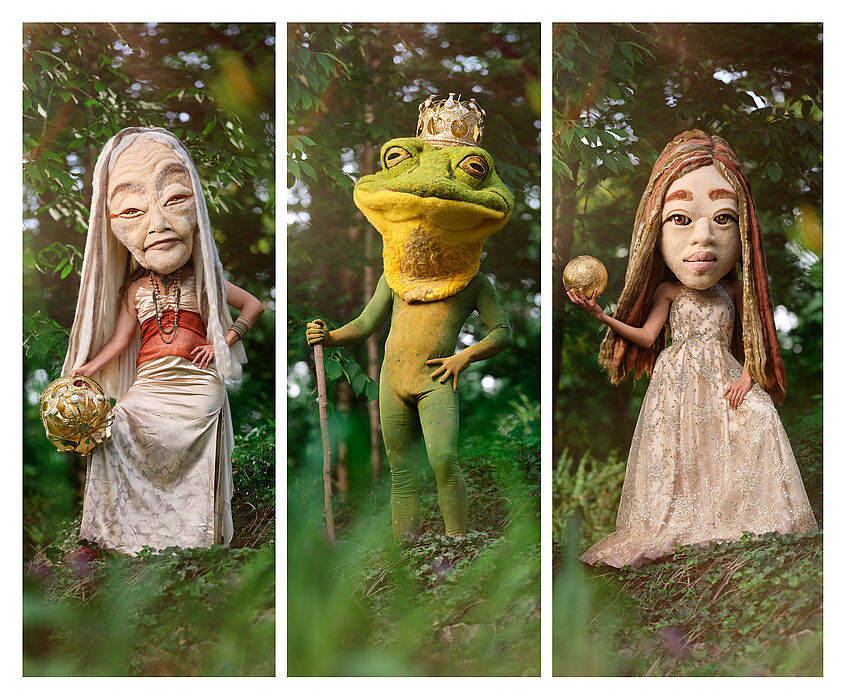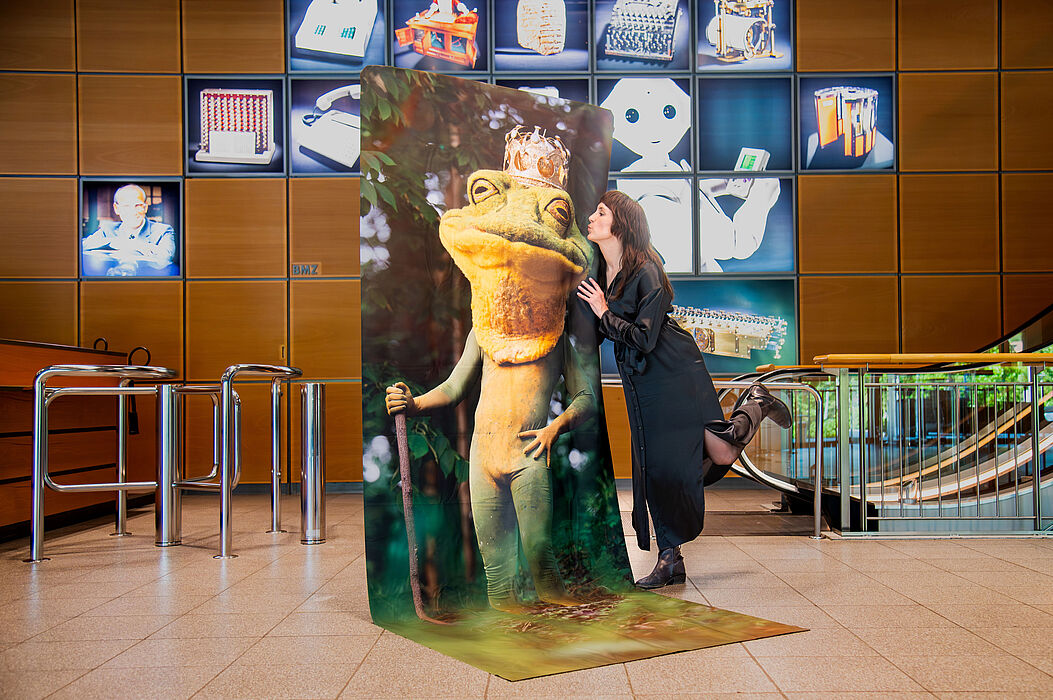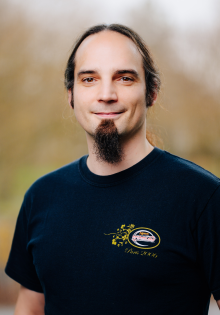In order to equip young people with valuable knowledge about the basic concepts and effects of quantum mechanics, Paderborn University has launched the "HedwiQ" project, an interactive educational programme for school pupils, in cooperation with the Heinz Nixdorf MuseumsForum (HNF). As part of this project and the "EIN Quantum NRW" education initiative, the free interactive exhibition "Art meets Quantum Physics" will open in the foyer of the Heinz Nixdorf MuseumsForum during the Paderborn Museum Night on Saturday, 30 August. It will run until 9 November. In addition, on Friday, 29 August, from 6.30 to 8.30 pm, interested visitors will have the opportunity to meet the artists in person at a vernissage. They will give talks in German and English about their respective creative processes. Visitors can therefore not only take an exclusive first look at the installations, but also behind the scenes. Registration for the free vernissage is possible on the event page.
In the multimedia installation "Quantum Frog", US-Americans Natalie Wetzel and Catherine Chung reimagine the fairy tale "The Frog Prince" through the lens of quantum physics and the structure of the photonic quantum computer. The collaborative project creates an interactive narrative with overlapping storylines, inviting visitors to explore different interpretations and realities. The installation includes video works, production artefacts and insights from the artists into their creative process. "Quantum Frog" is aimed at an audience of all ages.
The German-Swedish artist Maria Kling presents the interactive table sculpture "Aufenthaltswahrscheinlichkeit" in collaboration with Prof Dr Klaus Jöns and PD Dr Sonja Barkhofen from the "Hybrid Quantum Photonic Devices" group at Paderborn University. The sculpture depicts a quantum photonic chip that uses light particles (photons) to generate, process and transmit quantum information. The individual functional components on the chip are central components in the research and development of quantum computers, quantum communication and quantum sensor technology. Visitors to the sculpture can sit down at the table and use their own body heat to influence what happens on the chip. In this way, they can playfully explore how it works and how they themselves can change the probability of the photons travelling through it.
The "HedwiQ" project (introducing Generation Z to the quantum physics mindset) run by the Institute for Photonic Quantum Systems (PhoQS) at Paderborn University is sponsored by the German Federal Ministry of Research, Technology and Space (BMFTR) and aims to familiarise young people with the quantum mechanical worldview. In collaboration with the HNF, an interactive educational programme is being researched, which now includes the exhibition "Art meets Quantum Physics". Simulations, games and experiments are also part of the project. Experts in quantum physics, technology didactics and museum education are working together to constantly improve the educational programme and continuously evaluate its effectiveness. "The results provide important insights into how we can effectively educate future generations about quantum mechanics and arouse their interest in new technologies," says project coordinator Prof Jöns.



